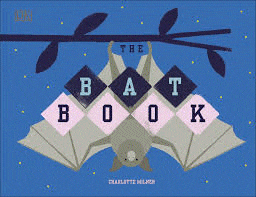
The Bat Book
The Bat Book
Charlotte Milner
DK Publishing, 2020
48pp., hbk., RRP $A24.99
9780241410691
Many years ago when I was wearing my classroom teacher’s hat rather than one of my teacher librarian hats , I taught a little boy who had great difficulties in fitting into classroom routines and learning, making friends and managing his choices. We were just learning about the autism spectrum in those days and while we and he could have done a lot differently now, at the time he was just a challenging child whose behaviour could set up the tone of the class for the whole day depending on whether he was in an aggressive/frustrated, active or passive phase. To the onlooker literacy wasn’t high on his agenda but what he knew about bats and the way he devoured anything in print or film about them showed a knowledge and skill that was usually hidden. Given this was the early days of being able to record television programs on VCRs at home, most of his understanding came through books and I soon learned to tailor his program so that as far as possible bats were included somewhere! (He not only taught me about bats but made a profound difference to my professional practice.)
So this book would have been a most marvellous resource for him (and me) as it explores the habitats and habits of bats all over the world, making these nocturnal creatures visible. Using accessible text in straight-forward paragraphs, accompanied by lots of lifelike illustrations and the characteristic DK layout, the reader is introduced to these flying mammals with lots of questions answered such as why they have to hang upside down, their preferred diet and how they find their food given the old saying of “as blind as a bat.” But as well as the basic facts much of the book is devoted to why they are important to the environment and ecosystems and what we can do to preserve the various species as they are threatened with a range of factors such as pesticides killing their primary food source. There are ideas for helping preserve and even enhance their populations.
A companion to The Bee Book , this is perfect for shining a spotlight on a misunderstood and maligned species that Simon would have adored. (He might even have been able to write it, way back then!)
